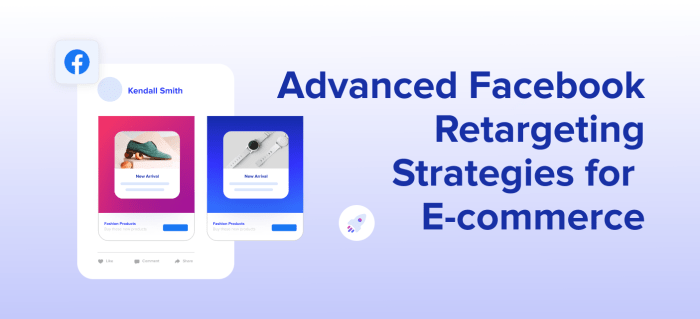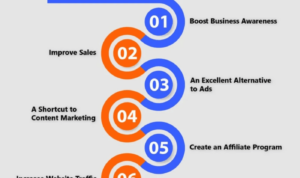Retargeting Strategies for E-commerce takes center stage, inviting you into a world where marketing meets innovation. Get ready to dive into the realm of online business with a twist!
Let’s explore the key elements of retargeting strategies in e-commerce, from boosting conversion rates to crafting compelling ads that drive results.
Introduction to Retargeting Strategies for E-commerce
In the world of e-commerce, retargeting strategies play a crucial role in engaging potential customers and driving sales. By targeting users who have already shown interest in a product or visited a website, retargeting helps businesses stay top-of-mind and encourage repeat visits.
Importance of Retargeting in E-commerce Marketing
Retargeting is essential because it allows businesses to reach out to potential customers who have already interacted with their brand. This personalized approach can significantly increase conversion rates as it reminds customers of products they were interested in, leading to higher chances of making a purchase.
- Retargeting helps in building brand awareness and loyalty by keeping the brand in front of the customer’s eyes.
- It encourages repeat visits to the website, increasing the chances of converting a lead into a sale.
- Retargeting also allows for personalized messaging based on the user’s behavior, making the ads more relevant and engaging.
Successful E-commerce Retargeting Campaigns
One notable example of a successful e-commerce retargeting campaign is from Amazon. After a user views a product on their website, they often receive personalized ads featuring the same or similar products on other platforms they visit. This keeps Amazon top-of-mind and increases the likelihood of the user returning to make a purchase.
By implementing effective retargeting strategies, e-commerce businesses can significantly increase their conversion rates and drive more sales.
Types of Retargeting Strategies
Retargeting strategies in e-commerce are essential for re-engaging potential customers who have shown interest in a product or service. Different types of retargeting strategies are used to reach out to these leads and convert them into buyers.
Pixel-based Retargeting vs. List-based Retargeting
Pixel-based retargeting involves placing a tracking pixel on your website, which then tracks users’ behavior and displays targeted ads to them across the web. This strategy allows you to target users based on their interactions with your site, such as products viewed or added to cart.On the other hand, list-based retargeting involves uploading a list of customer contact information, such as email addresses, phone numbers, or user IDs.
This allows you to target specific individuals who have already engaged with your brand, even if they haven’t visited your website recently.
Dynamic Retargeting in E-commerce
Dynamic retargeting is a personalized advertising strategy that shows specific products to users based on their previous interactions with your website. For example, if a user viewed a pair of shoes on your site but didn’t make a purchase, dynamic retargeting would display those exact shoes in ads as they browse other websites.With dynamic retargeting, e-commerce businesses can show relevant products to potential customers, increasing the chances of conversion and driving sales.
Implementing Retargeting Campaigns

Implementing retargeting campaigns for an e-commerce store involves several key steps to effectively reach potential customers who have shown interest in your products or services. By strategically setting up retargeting ads, you can increase conversion rates and drive sales. Here’s how you can get started:
Setting Up a Retargeting Campaign
To set up a retargeting campaign for your e-commerce store, follow these steps:
- Choose a retargeting platform: Select a retargeting platform that aligns with your business goals and target audience.
- Install tracking pixels: Place tracking pixels on your website to monitor visitor behavior and track conversions.
- Create audience segments: Segment your audience based on their interactions with your site to deliver personalized retargeting ads.
- Design compelling ad creatives: Develop eye-catching ad creatives that resonate with your audience and encourage them to revisit your site.
- Set up ad campaigns: Configure your retargeting campaigns with specific goals, budgets, and targeting parameters to maximize effectiveness.
- Monitor and optimize: Continuously monitor the performance of your retargeting campaigns and make adjustments as needed to improve results.
Role of Tracking Pixels in Retargeting Strategies
Tracking pixels play a crucial role in retargeting strategies by allowing you to track user behavior across your website. These small pieces of code collect data on visitor actions, such as product views, add to cart events, and purchases. By analyzing this data, you can create custom audience segments and deliver targeted ads to users who have already shown interest in your products.
Best Practices for Creating Compelling Retargeting Ads, Retargeting Strategies for E-commerce
When creating retargeting ads for your e-commerce store, consider the following best practices:
- Use personalized messaging: Tailor your ad copy and visuals to match the user’s previous interactions with your site.
- Include a strong call to action: Encourage users to take a specific action, such as completing a purchase or signing up for a newsletter.
- Optimize for mobile: Ensure your ads are mobile-friendly to reach users on smartphones and tablets.
- A/B test ad creatives: Experiment with different ad variations to identify which ones perform best with your audience.
- Capitalize on urgency: Create a sense of urgency with limited-time offers or promotions to drive immediate action.
Retargeting on Different Platforms

Retargeting on social media platforms for e-commerce can be highly beneficial as it allows you to reach potential customers who have already shown interest in your products or services. By targeting these individuals with tailored ads on platforms like Facebook, Instagram, or Twitter, you can increase brand awareness and encourage them to complete a purchase.
Comparing Google Ads vs Facebook Ads
- Google Ads: Retargeting on Google Ads can be effective as it allows you to target users based on their search behavior. This means you can show ads to people who have already searched for relevant s related to your products or services.
- Facebook Ads: On the other hand, Facebook Ads are great for retargeting as they offer detailed targeting options based on user demographics, interests, and behaviors. This can help you create personalized ads for a specific audience.
Tips for Optimizing Retargeting Campaigns on Multiple Platforms
- Use consistent messaging across all platforms to reinforce brand awareness and messaging.
- Segment your audience based on behavior and interests to deliver more personalized ads.
- Test different ad formats and creatives to see what resonates best with your target audience.
- Monitor and analyze the performance of your campaigns regularly to make data-driven decisions for optimization.
Measuring Success and Optimization: Retargeting Strategies For E-commerce
When it comes to measuring the success of retargeting campaigns, it’s essential to track key metrics that give insight into the performance and effectiveness of your ads. By analyzing these metrics, you can optimize your strategies for better results.
Key Metrics to Track
- Click-through Rate (CTR): This metric measures the percentage of people who click on your retargeting ads after seeing them. A high CTR indicates that your ads are engaging and relevant to your audience.
- Conversion Rate: The conversion rate shows the percentage of users who completed a desired action, such as making a purchase, after clicking on your retargeting ads. It’s a crucial metric for evaluating the effectiveness of your campaigns.
- Return on Ad Spend (ROAS): ROAS calculates the revenue generated from your retargeting ads compared to the amount spent on them. It helps determine the profitability of your campaigns.
A/B Testing Strategies for Optimization
A/B testing is a powerful method for optimizing retargeting ads. By testing different ad variations and analyzing the results, you can identify which elements perform best and make data-driven decisions to improve your campaigns. Some key strategies for A/B testing include:
- Testing different ad creatives, such as images, copy, and calls-to-action, to see which resonates best with your audience.
- Experimenting with different targeting options to reach specific segments of your audience more effectively.
- Testing various ad placements and formats to determine the most impactful ways to display your retargeting ads.
Adjusting Retargeting Strategies based on Performance Data
Performance data from your retargeting campaigns can provide valuable insights that help you refine and adjust your strategies for better results. By analyzing this data, you can make informed decisions on how to optimize your campaigns. Some insights on adjusting retargeting strategies based on performance data include:
- Identifying underperforming ads and pausing or tweaking them to improve their effectiveness.
- Increasing bids on high-performing ads to maximize their impact and reach.
- Testing different frequency caps to find the optimal balance between ad exposure and user experience.





